Caveat 1: My Political Bias
To understand my bias, see my post Why I am a Recovering Libertarian.
Caveat 2: Fools Rush In
I don't know much about tests to measure your level of development; what I know is from a conference call in 2007 with David Zeitler of Integral Institute. My impression is that the available tests are big, complex, and expensive. So this post is a case of fools rushing in where the really smart guys advise caution.
Sorting most conservatives from most liberals
The questions in Haidt's Five Foundations survey are simplistic, but as such they are perfect for filtering most liberals from most conservatives. For the moment I'm going to go with Karl's assumption that most conservatives are at purple-red-blue-orange (in Spiral Dynamics), while most liberals are at blue-orange-green. But I also suspect that some liberals are lower while some conservatives are higher. And remember, according to Integral Theory, "higher" means having a broader perspective that encompasses more experience.
The preamble to all questions in Haidt's Five Foundations survey is, "When you decide whether something is right or wrong, to what extent are the following relevant to your thinking? " One of the questions asks "Whether or not someone showed a lack of respect for authority." It seems likely that
- A conservative at blue is going to choose "Very Relevant" fast enough to make your head spin.
- A liberal at green is going to be just as fast to choose "Not Very Relevant."
- But everybody else is going to pause. Any liberals at the conventional level may well think, Most conservatives respect authority too much; I don't want to be associated with conservatives, so I will downshift my answer a notch or two, perhaps to "slightly relevant."
- And anyone at the yellow level or above is going to start asking questions about the context.
- Is it a legitimate authority?
- Did the authority violate its trust?
- Were all respectful options exhausted?
- Was the system itself at risk of harm?
Human guniea pig: my own results on Haidt's survey
Considerations like these show up in my own test results shown in the chart below:
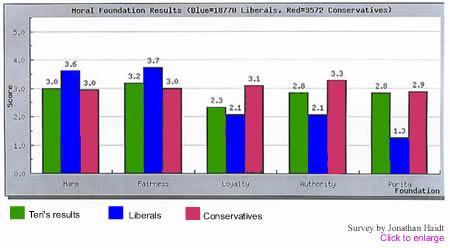
- With liberals, I ranked low on loyalty. (I'd only die for my country if I thought we were protecting someone from harm)
- With conservatives I ranked high on purity/sanctity. But I'm a libertarian on purity (e.g., not only are laws against homosexuality wrong, but laws against drugs and prostitution are wrong, too). So what's up with that ranking? Could it be the hour I spent trying to decide my answer to the weight on "what God wants"? (For more on purity and sanctity, see my One chart that Explains Religion.)
- With conservatives I ranked a bit lower than liberals on harm and fairness. Regarding harm, I can remember the exact day I down-shifted. Someone had to be removed from a team to keep from holding the team back. I agonized over the decision as someone I respected said, "I see why you have to do this, but she will be hurt." I did it anyway and hoped I never had to make a decision like that again.
- On respect for authority, I ranked half way between the liberals and conservatives, perhaps largely because of the experience I just mentioned
Screening for Transpartisans
How do we enhance a survey like Haidt's to make such a distinction? I think Karl is right (see his comment on my prior post); Each level has a primary value against which it filters or screens all other values. Thus, liberals at green or ornage screen out value on place on purity, loyalty, and sanctity to avoid any possible conflict with their primary values of fairness and protection from harm. Thus, our questions would need to screen for
- the person's primary ethical value (e.g., those for whom fairness and care always trump purity, loyalty, and authority.)
- the scope of the ingroup to which loyalty, fairness, and care are applied (family, tribe, or world)
Step 1: find the liberals who hold all five values
Our first test would use questions like those in Haidt's Five Foundations survey and simply pad them with qualifiers.
- A generic qualifier at the start that would reassure the libertarians that "These questions do not concern the passing of laws or use of punishment. They deal solely with how you personally feel about what is right and wrong."
- A qualifier specific to each question for anyone at post conventional, e.g., "In a situation in which you personally believe that someone showed a lack of respect for legitimate authority..."
Step 2: Filter out the blue
Presumably we now have a pool of blue, yellow, and beyond. The next step is to sort out those at blue: those who will always prioritize purity, loyalty, and authority as predicted by the spiral, and those whose scope of care is less than worldcentric. This sorting so would require questions carefully designed to get at the motives or perspectives behind the answers.
If these two steps indeed filtered blue, orange, and green, I suspect they would also filter out most of those with a strong political identification as liberal or conservative. Those left will identify themselves politically as independent, libertarian, or "other." These are our potential transpartisans. And I believe that if you ask them how they identified themselves previously, you will get a mix of those who have transcended both "liberal" and "conservative" labels. (More about why/how in a future post.)
Know it when I see it
But the more I look at this, the more I realize the big boys are right: no test can sort the levels adequately--partly because nobody could be trusted to score it. For me it boils down to having conservative friends whose behavior over an extended period tells me they're at integral--or higher. They take big risks to prevent harm to people outside their ingroups; they agonize over questions of appropriate authority; and they realize that whatever form salvation comes in, it must be available to all.
Can we reach out a hand to these transpartisans whose path to integral may have been so different from our own?
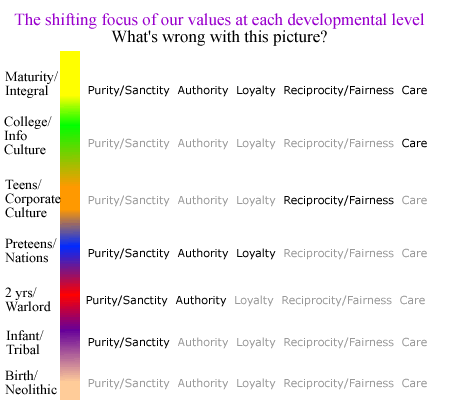
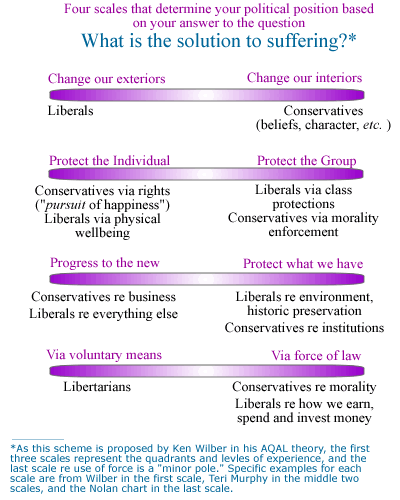
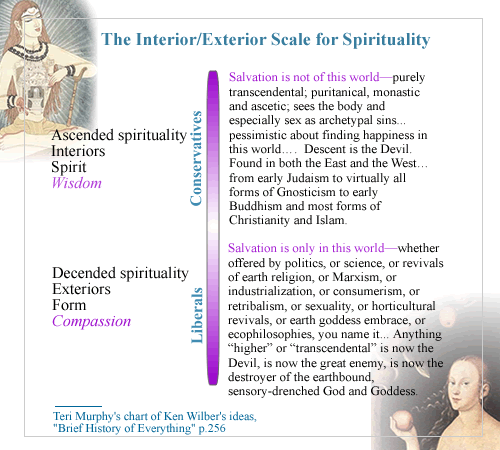
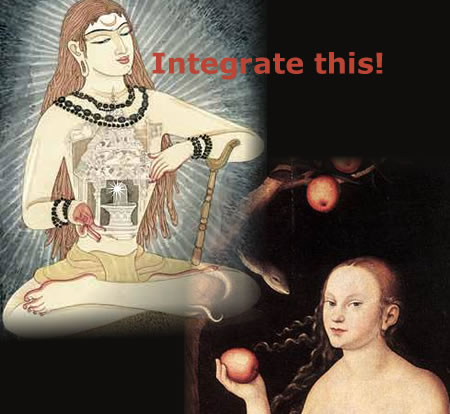
 Many of the Klansmen Davis met this way were so taken aback, and then moved by his willingness to dialogue with them, that they eventually surrendered their Klan membership and presented their robes to Davis. Several became his friends.
Many of the Klansmen Davis met this way were so taken aback, and then moved by his willingness to dialogue with them, that they eventually surrendered their Klan membership and presented their robes to Davis. Several became his friends.  I was irritated about a client's demand that I drive way out to her house to finalize our deal. Why not just fax it? But the evening turned into a blessing: in this season of having my stereotypes busted, I added two more: Muslim values and the possibilities for reinterpreting ancient rituals.
I was irritated about a client's demand that I drive way out to her house to finalize our deal. Why not just fax it? But the evening turned into a blessing: in this season of having my stereotypes busted, I added two more: Muslim values and the possibilities for reinterpreting ancient rituals.




